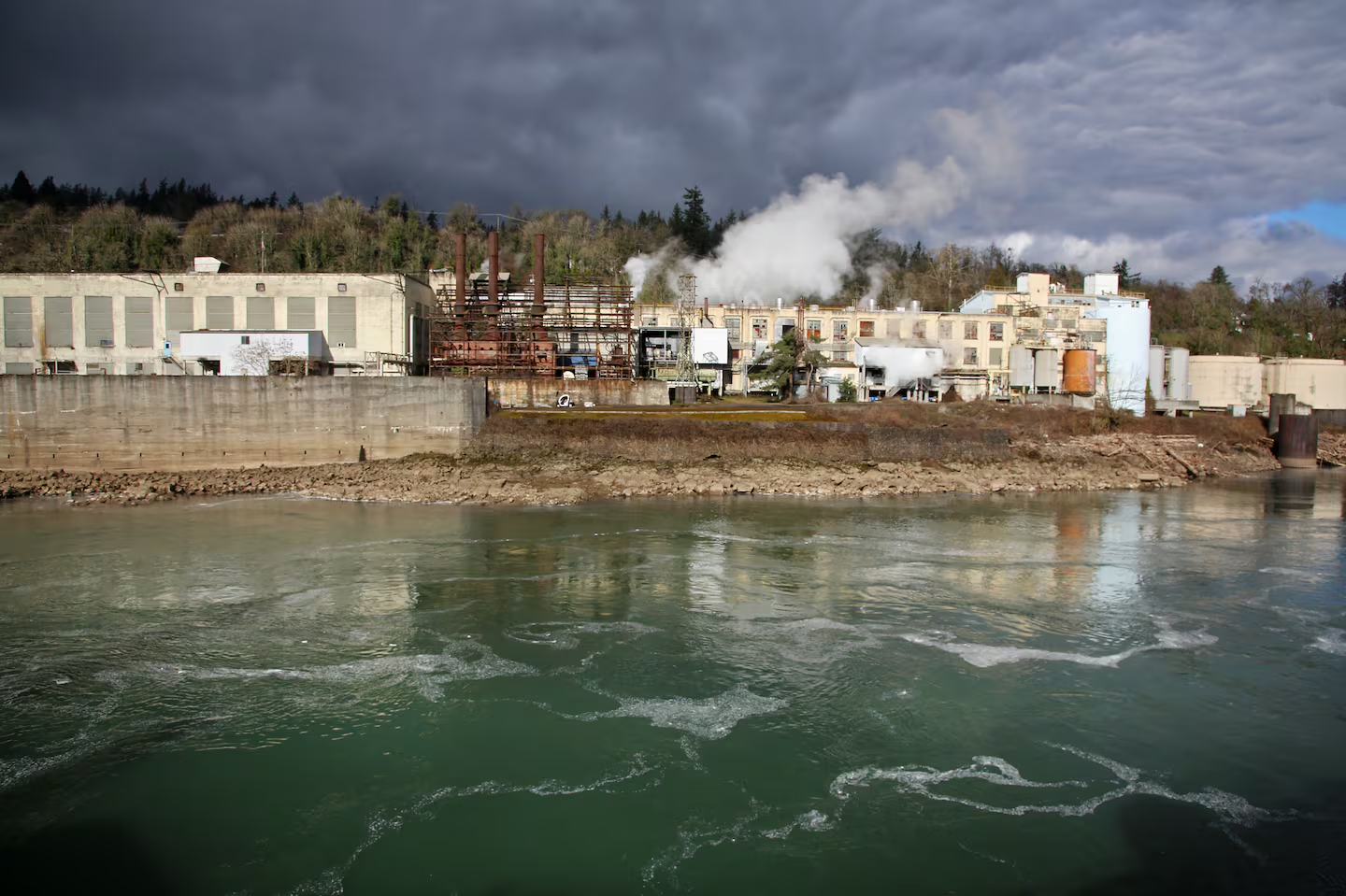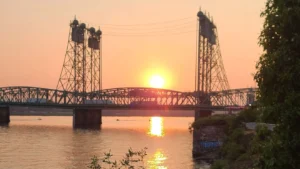A New Vision for Willamette Falls
A large-scale redevelopment effort is now underway at Willamette Falls after the Willamette Falls Trust secured a combined $75 million in public and private funding. The initiative, led by former Oregon Gov. Kate Brown, aims to transform the site of the former Willamette Falls Paper Company in West Linn into a vibrant cultural, ecological and public space.
This marks one of three active projects currently unfolding at the historic falls, joining the Confederated Tribes of Grand Ronde’s tumwata village development and the long-planned Willamette Falls Locks restoration.
Major Funding Secured
Unlike the other projects, the Willamette Falls Trust received a major boost from state lawmakers, who approved $45 million in public funding earlier this year. Additionally, Connie and Steve Ballmer — the former Microsoft CEO — committed $25 million, with another $5 million coming from private donors.
Also Read
“It’s a significant amount of money,” Brown said. “It reflects the magnitude of the project and the impact it can have over the coming decades.”
With Gov. Tina Kotek’s approval of the state funding in August, the trust quickly began forming a strategy for what comes next.
Restoring Access and Reconnecting People
At the heart of the project is a vision to “rewild the built environment,” Brown explained. The trust aims to restore ecological health, rebuild public access to the river and falls, and renew Indigenous connections to the site.
“We can’t return it to its pre-colonization state, but we can reimagine the space in a way that honors history and opens it to the public again,” she said.
Negotiations Underway for Key Land
The first step is land acquisition. Portland General Electric (PGE), which operates the hydroelectric plant at Willamette Falls, owns much of the 40-acre area around the old paper mill on Moore’s Island. The mill shut down in 2024, laying off more than 150 workers and later selling its assets.
Brown said the trust is now in negotiations with PGE, describing the location as ideal for public gathering areas, viewpoints and recreation access. She imagines the area becoming a future national heritage site or even a UNESCO World Heritage Site.
The trust and PGE have been operating under a “feasibility and cooperation agreement” since 2023, extended in 2024. Brown hopes a sale can be finalized by early 2027.
PGE spokesperson Andrea Platt confirmed that discussions are ongoing and emphasized the land’s importance to Northwest tribes.
Tribal Tensions and a Longstanding Dispute
The potential land sale comes during heightened tensions around land use at Willamette Falls. PGE is currently fighting a federal lawsuit involving the Oregon Department of State Lands and the Confederated Tribes of Grand Ronde over a fishing platform permit.
PGE argues its federal license requires it to control additional land at the falls, a stance that has angered the Grand Ronde tribe, whose members descend directly from the Chinookan peoples who originally lived at Willamette Falls. A ruling on PGE’s request to condemn land is expected soon.
This lawsuit is one piece of a broader conflict involving the Grand Ronde tribe and four other Northwest tribes with ancestral ties to the falls:
-
Confederated Tribes of Siletz Indians
-
Confederated Tribes of the Umatilla Indian Reservation
-
Confederated Tribes of Warm Springs
-
Confederated Tribes and Bands of the Yakama Nation
These four tribes are united through the Willamette Falls Trust and describe the new development as “Indigenous led.”
Brown said the trust has attempted to include the Grand Ronde tribe, but collaboration has not taken shape. Gov. Kotek has expressed hope that all stakeholders may eventually work together.
Tribal Leadership Encouraged by Progress
Robert Kentta, a tribal council member of the Siletz tribe and part of the trust’s tribal leadership committee, said the closure of the paper mill significantly opened the door for public development.
“The game really changed when the mill closed,” Kentta said. “It enhances the ability to develop public access that will really be usable.”
He emphasized that the project has indeed felt Indigenous led, with tribal leaders given substantial decision-making influence.
Reimagining and Reusing the Industrial Landscape
Once the land is secured, planning for the site’s future will begin. Much of the former mill will be demolished and cleaned up, but Brown said not all of the industrial structure will disappear.
She cited inspiration from the High Line Network, which supports projects that transform industrial spaces into public parks, such as Seattle’s Waterfront Park and San Francisco’s Crissy Field. The Willamette Falls Trust project is already listed among High Line Network initiatives.
“We want to rewild the built environment,” Brown said, “but we’re also exploring creative ways to reuse parts of the existing infrastructure.”
Community and tribal input will shape the final design.
A Long Timeline, but A Rare Chance
Even under the best circumstances, Brown estimates that development will take about a decade, and possibly longer. With demolition, cleanup, design work and construction ahead, the timeline is extensive.
Still, with $75 million already secured, the trust is pushing forward with urgency.
“This is truly a once-in-a-generation opportunity,” Brown said. “We won’t likely have another chance. Every day we get up knowing we need to make this happen.”












